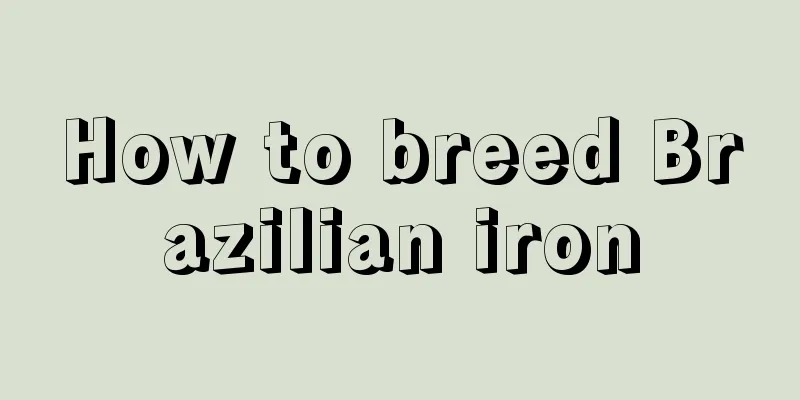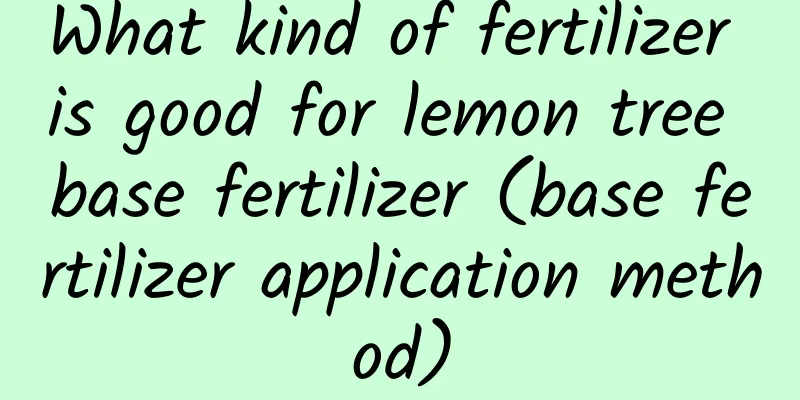How to breed Brazilian iron

1. Maintenance methods1. Temperature: 20-28℃ is the best temperature during growth, which is most suitable for the growth of Brazilian iron. It has poor cold resistance. In winter, if the temperature is below 13℃, its leaves will turn yellow. Therefore, try to keep the temperature above 13℃ and not below 5℃, otherwise it may be frozen to death or frostbite. 2. Light: It has strong adaptability to light and can grow normally in semi-shaded areas. However, the light cannot be too strong, and strong light should be blocked as much as possible in summer. In other seasons, it can be placed in a semi-shaded place, and in winter it can be placed in a sunny place. 3. Watering: During its growing season, generally speaking, it needs to be watered every 3-5 days. However, water needs to be controlled in winter, and this interval can be extended to a week or longer, but watering cannot be completely stopped. 4. Fertilization: There is not much demand for this aspect. Generally speaking, fertilizer can be applied once every 30-40 days, and the fertilizer used should preferably be quick-acting fertilizer. 2. Breeding techniques1. Reproduction: The commonly used method is cuttings, which is best done in May and June. Select strong stem segments about five or six centimeters in length. Choose coarse sand or vermiculite as the substrate, which can be inserted upright or laid flat on top. After that, the temperature needs to be around 20℃. It will take about thirty to forty days for the seeds to take root. 2. Pruning: During the growth period, the plant grows very vigorously, and its branches and leaves may grow very messy, affecting its appearance and consuming a lot of nutrients. Therefore, regular pruning is very important. In addition to these dense and messy branches and leaves, the dry and aging branches and leaves also need to be cut off in time. 3. Problem diagnosis and treatment1. Diseases: Diseases that harm leaves, such as "leaf blight", may occur and are more common in summer. It can be treated with carbendazim, and ventilation should be carried out in time and the density should be controlled. 2. Pests: Mainly "red spiders", especially for plants grown indoors. They will suck the juice from the leaves and can be controlled with drugs such as dichlorodiphenyltrichloroethane. IV. Other issues1. Toxicity: The Brazilian iron mulberry is non-toxic, and its whole plant is non-toxic, so you can cultivate it with confidence. 2. Can it be raised at home? The environment at home is more suitable for the growth of Brazilian iron. Moreover, there are many benefits to placing it at home, such as viewing and purification. |
<<: How to grow Australian fir
>>: How to breed white butterflies
Recommend
How to sow white thuja
1. Seed collection We usually start collecting se...
How to grow camellia well?
Camellia, as one of the top ten famous flowers in...
Cultivation methods and precautions of Tia
1. Maintenance methods 1. Substrate selection: It...
How and when to plant peppers
Time and month for planting peppers Bell peppers ...
Should the rose buds be cut off in winter (should the rose buds be cut off in early winter if they cannot open)
Does the rose still need pruning when it is still...
How to prune camellia
When to prune camellia Camellias are usually prun...
How to grow azaleas so that they bloom continuously and how to relieve leaf dryness
1. Maintenance 1. Watering: The root system of az...
How to breed Charizard
1. Cutting 1. Time: Choose the growing season, ar...
What are the garden uses of flame tree?
Flame tree lawn and road greening layout When gro...
What are the cultivation methods and precautions for hydroponic sweet potatoes?
Growth habits of hydroponic sweet potatoes When c...
What can't be eaten with mango?
1. Garlic Mango is one of the few fruits that con...
What to do if the fairy finger is soft and limp? You can remedy it this way!
Possible reasons One reason is that we water too ...
How to change the soil and pot of succulent plants
Succulent plant soil and pot change time The best...
Golden bean bonsai cultivation methods and management precautions (suitable light time and temperature)
The plant of the golden bean potted plant is not ...
How to grow potted strawberries
The best time to buy strawberry seedlings is usua...









